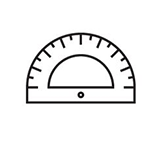파키케팔로사우루스(Pachycephalosaurus)
| 국내/해외배송 | |
|---|---|
| 배송비 방법 | 택배 |
| 배송비 | 4,000원 (50,000원 이상 구매 시 무료) |
| 수량 |
|
| 상품 정보 | 가격 | 삭제 |
|---|---|---|
| [총 상품금액(수량)] 0 (0개) | ||
-
- 학명 Scientific Name : Pachycephalosaurus
- 형태 Mode : 골격화석 Skeleton
- 시대 Age : 후기 백악기 Late Cretaceous
- 크기 L×W×H (m) : 2.3m×0.5m×0.8m
- 원산지 Location : 미국 (Alberta, USA)
PACHYCEPHALOSAURUS("Thick-Headed Lizard")
해부학적인 특징(ANATOMY)
Pachycephalosaurus was a dome-headed dinosaur. Its huge head housed an incredibly thick skull, a tiny brain, and large eyes. Its rounded skull was up to 10 inches thick (25 cm). Pachycephalosaurus grew to be about 15 feet long (4.6 m) and may have weighed roughly 950 pounds (430 kg). Pachycephalosaurus probably had a good sense of smell. It had bumpy knobs on its snout and along the rear of its skull. This plant-eater had short forelimbs and a stiff tail (which had a distinctive mesh of interwoven tendons surrounding its rear portion).
파키케팔로스의 행동(PACHYCEPHALOSAURUS BEHAVIOR)
Pachycephalosaurs were herding dinosaurs that lived in small groups in coastal and upland regions. Running was probably the first line of self-defense.
It had long been thought that Pachycephalosaurus' huge dome may have been used for ramming rivals during mating and dominance combat, for attracting mates, and as a last-ditch self-defense against predators (this idea was first presented by Ed Colbert in 1955). Paleontologist Mark Goodwin of the
살던시기(WHEN PACHYCEPHALOSAURUS LIVED)
Pachycephalosaurus lived during the late Cretaceous period, about 76 to 65 million years ago, toward the end of the Mesozoic, the Age of Reptiles. Among the contemporaries of Pachycephalosaurus were Albertosaurus and Troodon, Maiasaura, Tyrannosaurus rex, Ankylosaurus (an armored herbivore), Parasaurolophus, Corythosaurus (a crested dinosaur), and Dryptosaurus (a leaping dinosaur).
조상(PACHYCEPHALOSAURUS ANCESTORS)
Pachycephalosaurs probably evolved from Hypsilophodon, a small, agile, bipedal herbivore.
식성(DIET)
Pachycephalosaurus was an herbivore, eating soft plants, fruit, and seeds. Its teeth were small and sharp.
발견지(LOCOMOTION)
Pachycephalosaurus walked on two legs, and was not a very fast dinosaur. When it walked or ran, it probably held its back level to the ground. It may have gone on all fours to forage for low-lying plants.
발굴지(DISCOVERY OF FOSSILS)
Pachycephalosaurus was discovered in 1938 by William Winkley on the family ranch outside of
분류(CLASSIFICATION)
Pachycephalosaurus belonged to the:
- Order Ornithischia dinosaur - bird-hipped, herbivorous dinosaurs
- Marginocephalia
- Suborder Pachycephalosauria - thick-skulled herbivores (possibly herding) which includes: Pachycephalosaurus, Stegoceras, Wannanosaurus, and others.
- Genus Pachycephalosaurus
- Type species - P. wyomingensis (Gilmore, 1931) (previously known as Troodon).













 확대보기 및 상세정보
확대보기 및 상세정보